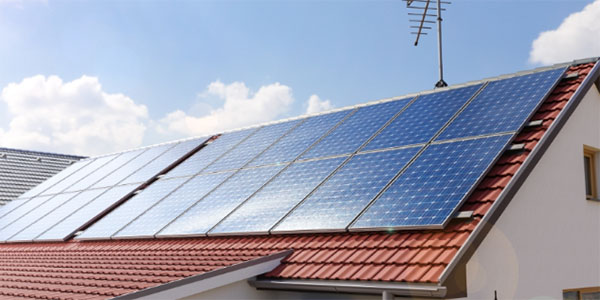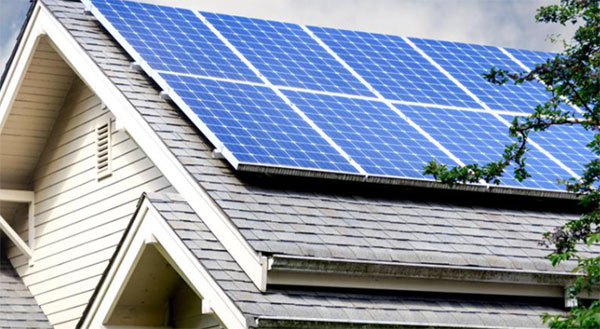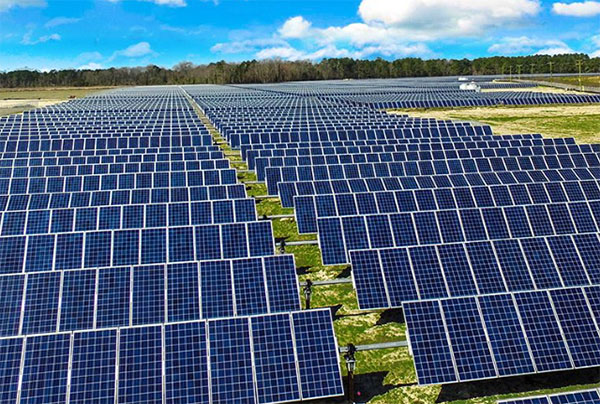Description
China leads in solar energy usage due to significant investment, supportive government policies, and a strong manufacturing base.

Global Solar Energy Overview
The utilization of solar energy has seen a remarkable surge across the globe, as nations strive to transition towards more sustainable energy sources. Solar power, harnessed through photovoltaic (PV) panels and solar thermal systems, offers a clean, renewable, and increasingly cost-effective energy solution.
Solar Energy Adoption Rates by Continent
Asia leads the charge in solar energy adoption, with countries like China and India installing massive solar farms.
Europe shows robust growth in solar energy, spearheaded by Germany and Spain. Germany's solar power capacity stands at around 50 GW, with the country achieving record solar generation during sunny periods. Spain's favorable climate and supportive policies have enabled it to achieve a solar power capacity of over 14 GW.
North America sees the United States leading with a solar power capacity of approximately 97 GW. The declining cost of solar installations, which now averages around $2.81 per watt, coupled with federal incentives, has spurred adoption.
Key Factors Driving Solar Energy Adoption
Technological Advancements: The efficiency of solar panels has significantly improved, with top-tier panels now achieving efficiency rates of over 22%.
Economic Incentives: Governments worldwide have introduced various subsidies and tax incentives to lower the financial barriers to solar energy adoption.
Environmental Concerns: The growing awareness of climate change and the environmental impact of fossil fuels has led to public and private sector commitments towards renewable energy. Solar energy, being one of the cleanest forms of renewable energy, has gained significant attention in this regard.
Energy Security: Solar energy provides countries the opportunity to reduce their dependence on imported fossil fuels, enhancing their energy security. The localized nature of solar power generation also reduces the vulnerability associated with centralized energy production and distribution systems.

Leading Country in Solar Energy
The global race towards sustainable energy has seen remarkable strides, especially in the deployment of solar power. One country stands at the forefront of this revolution, harnessing the sun's power more efficiently and extensively than any other.
Historical Growth of Solar Energy Infrastructure
In the leading country, the journey towards solar supremacy began over a decade ago, marked by an aggressive expansion of solar farms and photovoltaic (PV) installations. From a modest total installed capacity of less than 10 gigawatts (GW) in the early 2000s, the nation has surged ahead to boast over 200 GW today. This exponential growth is not just a testament to technological advancement but also to the unwavering commitment of both the public and private sectors.
Significant milestones include the construction of the world's largest solar park, covering thousands of acres and generating more than 2 GW of power alone. This monumental project, along with hundreds of smaller ones, highlights the nation's ambition and the scale of its vision.
Key Projects:
- World's Largest Solar Park: Over 2 GW capacity
- Nationwide Residential Solar Program: Equipped over 1 million homes with rooftop PV panels
Government Policies Supporting Solar Energy
Government policies have been instrumental in the leading country's rise to solar prominence. A combination of generous subsidies, favorable regulations, and ambitious renewable energy targets has created an environment ripe for solar investment.
Policies That Made a Difference:
- Feed-in Tariffs (FITs): Offering above-market rates for solar electricity
- Tax Incentives: Significant deductions on solar equipment and installation costs
- Renewable Portfolio Standards (RPS): Mandating a certain percentage of energy from renewable sources
The government also allocated substantial budgets towards research and development, focusing on improving solar panel efficiency and reducing manufacturing costs.
R&D Achievements:
- Panel Efficiency: Increase from 15% to 22%
- Cost Reduction: Solar installation costs have decreased by over 70% in the past decade
The synergy between public policy and private sector innovation has not only made solar energy more accessible but also more affordable. Today, the cost of solar power in the leading country is among the lowest in the world, making it a competitive alternative to fossil fuels.
Economic Impact:
- Lower Costs: Solar power now costs as little as $0.05 per kilowatt-hour (kWh), comparable to coal and natural gas
- Job Creation: The solar industry has created hundreds of thousands of jobs, from manufacturing to installation.

Technological Advancements in Solar Energy
Innovations in Solar Panel Efficiency
Recent years have seen a significant leap in
solar panel efficiency, with top-tier manufacturers now producing panels that exceed 22% efficiency, a notable improvement from the 15-18% range seen a decade ago. This increase is largely attributed to the adoption of
monocrystalline silicon technology, which offers superior light absorption and less space requirement. For instance, the latest models from leading companies can generate more than 400 watts of power per panel, a stark contrast to the 250 watts standard in earlier models. These advancements not only enhance the power output per square meter but also reduce the overall cost of installation, given that fewer panels are needed to meet the same energy requirements.
Impact of Storage Solutions on Solar Usage
The integration of
advanced storage solutions has dramatically transformed the way solar energy is utilized, moving beyond the traditional daylight hours to providing power 24/7.
Lithium-ion batteries, the most popular choice for solar energy storage, have seen a significant drop in price, from approximately $1,000 per kilowatt-hour in 2010 to under $200 per kilowatt-hour today. This reduction has made solar energy more accessible and affordable, encouraging wider adoption.

Economic Impact of Solar Energy in the Leading Country
The economic landscape of the leading country in solar energy has been significantly shaped by the adoption and advancement of solar technology. This transformation is evident in various sectors, including job creation, industry growth, and the competitive positioning of solar energy against traditional energy sources.
Job Creation and Industry Growth
Manufacturing Sector
The production of solar panels and related components has seen a surge, with
employment numbers increasing by 20% annually over the past five years.
Installation and Maintenance
This sector has grown exponentially, with over
250,000 full-time jobs created in the last decade, emphasizing the demand for skilled labor.
Research and Development (R&D)
Investment in R&D has doubled, reaching
$5 billion annually, focusing on enhancing solar panel efficiency and energy storage solutions.
Key Points:
- Bold job growth in the solar sector outpaces traditional industries, highlighting the sector's economic vitality.
- Investments in technology and infrastructure have catalyzed industry-wide advancements, positioning solar energy as a cornerstone of the future energy landscape.
Cost Comparison with Other Energy Sources
The economic viability of solar energy has improved dramatically, making it a competitive alternative to fossil fuels. Detailed cost analysis reveals:
- Levelized Cost of Electricity (LCOE): Solar energy's LCOE has dropped by over 70% in the past decade, making it one of the cheapest sources of power available today.
- Capital Costs: The average capital cost for solar power installations has decreased from $4,000 per kW to under $1,000 per kW, making solar projects more accessible and affordable.
- Operational Costs: Solar energy systems have minimal operational costs, typically ranging from $10 to $20 per MWh, significantly lower than coal or natural gas plants.

Environmental Benefits in the Leading Country
Reduction in Carbon Emissions
The leading country in solar energy has witnessed a substantial decrease in carbon emissions, thanks to its significant investment in solar technology.
The shift towards solar energy has resulted in the reduction of millions of tons of CO2 emissions annually. Specifically, the deployment of solar panels across residential, commercial, and utility scales has offset the equivalent of over 50 million metric tons of CO2 per year. This achievement aligns with global efforts to combat climate change and promotes a healthier environment.
Key factors contributing to this reduction include:
- Decreased reliance on fossil fuels: The expanded use of solar power reduces the demand for coal and natural gas, leading to lower emissions of harmful pollutants.
- Increased energy efficiency: Solar panels convert sunlight into electricity more efficiently than the conversion of coal or gas into power, leading to less energy waste.
Contribution to Sustainable Development Goals
The commitment to solar energy has significantly contributed to the achievement of several
Sustainable Development Goals (SDGs), including affordable and clean energy (SDG 7), climate action (SDG 13), and sustainable cities and communities (SDG 11). By fostering the adoption of clean energy, the leading country not only works towards ensuring access to affordable, reliable, sustainable, and modern energy for all but also takes substantial steps in combating climate change and its impacts.
Notable contributions include:
Promotion of renewable energy
The expansion of solar energy infrastructure supports SDG 7 by increasing the share of renewable energy in the global energy mix, making energy services more affordable and reducing energy poverty.
Strengthening resilience and adaptive capacity to climate-related hazards
By reducing dependency on fossil fuels, the country advances SDG 13, which focuses on taking urgent action to combat climate change and its impacts.
Improving air quality and urban health
The reduction in air pollution from decreased fossil fuel usage contributes to healthier cities, aligning with SDG 11 to make cities inclusive, safe, resilient, and sustainable.








